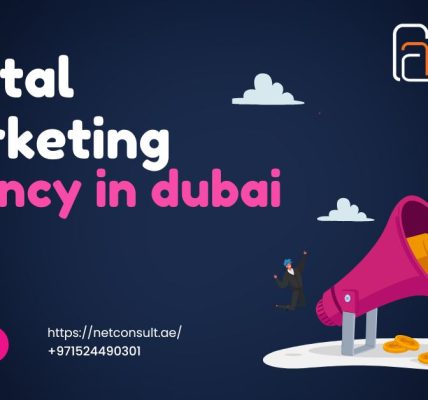-
Table of Contents
Crafting SEO-Friendly Content: Unlocking Online Visibility
Content optimization is the process of crafting and structuring website content in a way that makes it more search engine-friendly. By incorporating relevant keywords, improving readability, and enhancing user experience, content optimization aims to increase a website’s visibility and ranking on search engine results pages (SERPs). This practice involves various techniques, such as keyword research, on-page optimization, and creating high-quality, engaging content that resonates with both search engines and users. Ultimately, content optimization plays a crucial role in driving organic traffic to a website and improving its overall online presence.
The Importance of Keyword Research in Content Optimization
The Importance of Keyword Research in Content Optimization
When it comes to content optimization, one of the most crucial steps is conducting thorough keyword research. Keyword research involves identifying the words and phrases that people are using to search for information related to your topic. By understanding the keywords that are relevant to your content, you can optimize your website and improve its visibility in search engine results.
Keyword research is essential because it helps you understand what your target audience is searching for. By knowing the specific words and phrases they use, you can tailor your content to meet their needs and provide them with the information they are looking for. This not only improves the user experience but also increases the chances of your content being discovered by potential customers.
There are several tools available that can assist you in conducting keyword research. These tools provide valuable insights into search volume, competition, and related keywords. By using these tools, you can identify high-volume keywords that are relevant to your content and have relatively low competition. This allows you to target keywords that have a higher chance of ranking well in search engine results.
Once you have identified the keywords you want to target, it is important to strategically incorporate them into your content. This involves optimizing your titles, headings, meta descriptions, and body text to include the selected keywords. However, it is crucial to strike a balance between keyword optimization and maintaining a natural flow of your content. Keyword stuffing, or overusing keywords, can result in penalties from search engines and negatively impact your rankings.
In addition to incorporating keywords into your content, it is also important to consider user intent. User intent refers to the reason behind a user’s search query. Understanding user intent allows you to create content that directly addresses their needs and provides them with valuable information. By aligning your content with user intent, you can increase the chances of your content ranking higher in search engine results.
Another aspect of keyword research is identifying long-tail keywords. Long-tail keywords are longer and more specific phrases that have lower search volume but higher conversion rates. These keywords are often used by users who are further along in the buying process and have a clearer idea of what they are looking for. By targeting long-tail keywords, you can attract highly relevant traffic to your website and increase the likelihood of conversions.
Furthermore, keyword research is an ongoing process. It is important to regularly review and update your keyword strategy to stay relevant and competitive. As search trends and user behavior change, so do the keywords that people use to search for information. By staying up to date with keyword research, you can ensure that your content remains optimized and continues to attract organic traffic.
In conclusion, keyword research plays a vital role in content optimization. By understanding the keywords that your target audience is using, you can create content that meets their needs and improves your website’s visibility in search engine results. Through strategic keyword incorporation, consideration of user intent, and targeting long-tail keywords, you can optimize your content and increase its chances of ranking well. Remember, keyword research is an ongoing process that requires regular review and updates to stay ahead of the competition.
Best Practices for On-Page SEO in Content Optimization
Best Practices for On-Page SEO in Content Optimization
When it comes to content optimization, one of the most crucial aspects is on-page SEO. On-page SEO refers to the optimization techniques that are implemented directly on the website or webpage to improve its visibility and ranking on search engine result pages (SERPs). By following best practices for on-page SEO, you can ensure that your content is not only user-friendly but also search engine-friendly.
First and foremost, it is essential to conduct thorough keyword research. Keywords are the foundation of on-page SEO. They are the words or phrases that users type into search engines when looking for information. By identifying the right keywords for your content, you can optimize it to match the search intent of your target audience. Tools like Google Keyword Planner and SEMrush can help you find relevant keywords with high search volume and low competition.
Once you have identified your target keywords, it is crucial to strategically place them throughout your content. However, it is important to maintain a natural flow and avoid keyword stuffing, as search engines penalize websites that engage in this practice. Instead, focus on incorporating keywords in the title, headings, meta tags, and within the body of the content. This will signal to search engines that your content is relevant to the user’s search query.
In addition to keywords, another important aspect of on-page SEO is optimizing your meta tags. Meta tags are snippets of text that provide information about a webpage to search engines. The two most important meta tags are the meta title and meta description. The meta title should be concise, descriptive, and contain your target keyword. The meta description should provide a brief summary of the content and entice users to click on your link in the SERPs.
Furthermore, the structure of your content plays a significant role in on-page SEO. Organizing your content with headings and subheadings not only makes it easier for users to read but also helps search engines understand the hierarchy and relevance of the information. Use H1 tags for the main title and H2, H3, and so on for subheadings. Incorporate keywords naturally within these headings to further optimize your content.
Another best practice for on-page SEO is to optimize your images. Images can enhance the visual appeal of your content, but they can also slow down your website if not properly optimized. Compress your images to reduce their file size without compromising quality. Additionally, use descriptive file names and alt tags that include relevant keywords. This will not only improve the accessibility of your content but also provide additional opportunities for search engines to understand the context of your images.
Lastly, ensure that your content is mobile-friendly. With the increasing use of smartphones and tablets, it is crucial to optimize your content for mobile devices. Responsive design, fast loading times, and easy navigation are key factors in providing a positive user experience. Search engines prioritize mobile-friendly websites in their rankings, so it is essential to ensure that your content is accessible and user-friendly across all devices.
In conclusion, on-page SEO is a critical component of content optimization. By conducting thorough keyword research, strategically placing keywords, optimizing meta tags, structuring your content, optimizing images, and ensuring mobile-friendliness, you can improve the visibility and ranking of your content on search engine result pages. Implementing these best practices will not only make your content more search engine-friendly but also enhance the user experience, ultimately driving more organic traffic to your website.
Strategies for Creating Engaging and Shareable Content
Strategies for Creating Engaging and Shareable Content
In today’s digital age, creating engaging and shareable content is crucial for any business or website looking to increase its online visibility. With the ever-changing landscape of search engine optimization (SEO), it is essential to stay up-to-date with the latest strategies for crafting SEO-friendly content. By following these strategies, you can ensure that your content not only ranks well in search engine results but also resonates with your target audience, leading to increased engagement and shares.
One of the most important strategies for creating engaging and shareable content is to understand your target audience. By knowing who your audience is, you can tailor your content to their needs, interests, and preferences. Conducting thorough market research and analyzing your website analytics can provide valuable insights into your audience’s demographics, interests, and online behavior. Armed with this information, you can create content that speaks directly to your audience, making it more likely to be shared and engaged with.
Another strategy for creating engaging and shareable content is to focus on storytelling. Humans are naturally drawn to stories, and incorporating storytelling elements into your content can make it more relatable and memorable. Whether you are writing a blog post, creating a video, or designing an infographic, think about how you can tell a compelling story that resonates with your audience. This could involve sharing personal anecdotes, using case studies, or highlighting customer success stories. By weaving storytelling into your content, you can capture your audience’s attention and encourage them to share your content with others.
Additionally, incorporating visual elements into your content can significantly enhance its engagement and shareability. Studies have shown that people are more likely to engage with and share content that includes eye-catching visuals such as images, videos, and infographics. Visuals not only make your content more visually appealing but also help to convey information in a more digestible and memorable way. When creating visual content, ensure that it is relevant to your topic and aligns with your brand’s style and tone. By incorporating visuals into your content, you can make it more shareable and increase its chances of going viral.
Furthermore, optimizing your content for social media platforms is essential for maximizing its shareability. Each social media platform has its own unique features and requirements, so it is crucial to tailor your content accordingly. For example, when sharing content on Twitter, you should focus on crafting concise and attention-grabbing headlines, while on Instagram, you should prioritize high-quality visuals and engaging captions. By optimizing your content for each platform, you can increase its visibility and encourage more shares and engagement.
Lastly, promoting your content through various channels is crucial for increasing its reach and shareability. In addition to sharing your content on your website or blog, consider leveraging other platforms such as social media, email newsletters, and guest blogging. By promoting your content through multiple channels, you can reach a wider audience and increase the chances of it being shared. Additionally, engaging with your audience through comments, shares, and likes can also encourage them to share your content with their own networks.
In conclusion, creating engaging and shareable content is a vital aspect of content optimization. By understanding your target audience, incorporating storytelling and visuals, optimizing for social media, and promoting your content through various channels, you can increase its visibility and encourage more shares and engagement. Remember, crafting SEO-friendly content is not just about ranking well in search engine results; it is about creating content that resonates with your audience and compels them to share it with others.In conclusion, content optimization is the process of crafting SEO-friendly content to improve search engine rankings and attract organic traffic. By incorporating relevant keywords, optimizing meta tags, headers, and URLs, and ensuring high-quality and engaging content, businesses can increase their visibility and reach a wider audience. Content optimization is an essential aspect of any successful SEO strategy and can greatly contribute to the overall success of a website or online platform.





